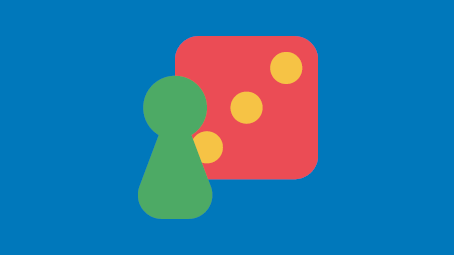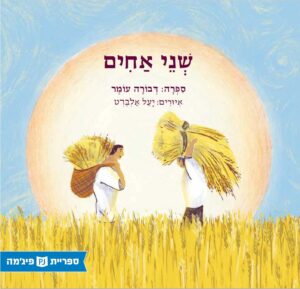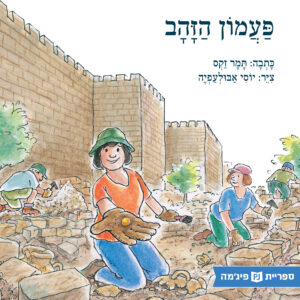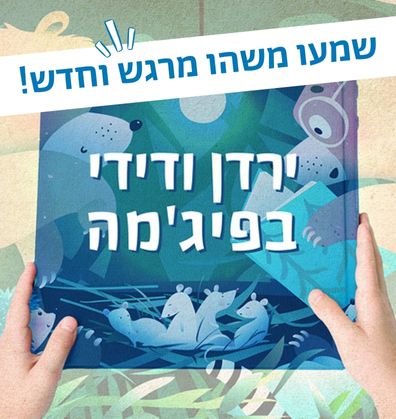חַגִּים וְיָמִים מְיֻחָדִים
שבועות
חג השבועות, הלא הוא גם חג הקציר, חג הביכורים וחג מתן תורה, הוא הזדמנות נהדרת לעסוק בחיבור לחקלאות ולארץ ישאל ולהכיר את המסורת היהודית. עם מגוון ספרים בנושא שבעת המינים, בית המקדש ומנהגי החג, תוכלו להיכנס לרוח החג בחגיגיות ובשמחה!
סְּפָרִים
Book-Related Family Activities
Proposed Family Activities:
- You may want to leaf through the book and look for all the activities that the brothers do together. Perhaps your child can think with you about all the things around the house that are easier and more fun to do together by joining forces.
- There are many words in Hebrew that describe farming. Does your child know the names of all the different actions? You could look at the illustrations depicting farming activities in the book, and try to do the same using hand gestures.
- Each of the brothers is considerate of the other, and gives up his share without ever having been asked to do so. You may enjoy making an illustrated list together of examples of actions that show how each of you has conceded and helped members of your family.
- Like the brothers in this book, you too can make a heartwarming surprise for your child during the night, to which they will open their eyes in the morning. Afterwards, your child may surprise you too!
- The brothers in this story understand that dividing things up equally is not always the fairest method, and therefore each of them wishes to give up some of his share for his brother. You may want to discuss the different needs of your own family members, and promise your child that even when they do not get exactly the same things as their siblings, they too will always get what they need.
- “Each of us has a city called Jerusalem” (Natan Yonatan): the book informs us that the Temple in Jerusalem was built on the exact spot where the two brothers met. Having read this story, you may want to look for pictures of Jerusalem together, sing songs about the city, and tell your children about “your Jerusalem”.

“The Stone of Claims”
The Sages taught: There was a stone of claims in Jerusalem, and anyone who lost an item would be directed there, and anyone who found a lost item would be directed there. (Talmud Bavli, Bava Metzia, 28b).
One family member is the “finder”, who stands on the stone of claims, and describes an item in the home in great detail. Whoever guesses what the item is, brings it to the claimant, and becomes the next one.

Hashavat Aveda – returning lost property to its owner
Have you ever lost anything that belong to you or others like Itamar did? How did you feel when you discovered that the item was missing? Have you helped others look for something that they lost? How does it feel to find something that someone else lost? What can we do when that happens?


An Illustrative Journey
The book’s illustrations reveal details about life in Eretz Yisrael thousands of years ago. You can focus on a different detail each time, such as the stone houses, utensils, or animals; you can ask questions and try to imagine what it was like to be a shepherd in the field, and what sound the bells on the High Priest’s robe made.

Where is the bell hiding?
You can hide a bell or similar item around the house, and send your entire family searching for it. The finder will be the next hider. And what if it’s hard to find? You can ask the hider to give you hints by making sounds (such as “ding dong”). As the seekers get closer to the hiding place, the hider will make the bell sounds louder.

 Two Brothers and the Temple Site
Two Brothers and the Temple Site  The seven species
The seven species  Festive Flavors
Festive Flavors  The Golden Bell
The Golden Bell 
